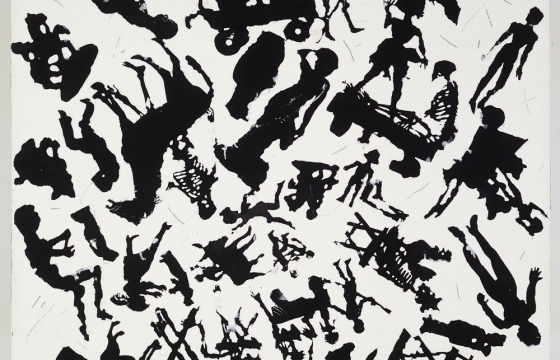After a brilliant showing at the Armory Show earlier this month, pt.2 is proud to present a group exhibition featuring the work of six monumental artists: Jay DeFeo, Martha Shaw, Mildred Howard, Robert Therrien, Squeak Carnwath, and Viola Frey. With deep connections to the Bay Area, these artists have laid the groundwork for generations of artists to come, forming the very foundations of contemporary art in the region. The works in the exhibition delve into the themes of support and underlying structures—both literal and metaphorical—that shape our understanding of art and the everyday. These artists, each with their distinct approach and medium, come together to explore the ordinary and the extraordinary.
The tension between familiarity and mystery invites curiosity about the artists’ choices and their relationship with these objects, prompting us to wonder what personal, cultural, or emotional significance these objects hold for them. What we take for granted as “ordinary” becomes a vessel for deeper meaning, inviting a reflection on how objects anchor us in reality while also allowing us to dream or explore new interpretations. It reinforces the idea that foundations are not always stable or fixed, but are constantly evolving as we interact with the objects and memories that form them. This abstraction mirrors the fluidity of identity itself—the idea that what we show to the world may be a projection, much like how we interpret objects through the lens of our own identities.
Jay DeFeo’s Tripod series explores themes of balance and support, using the camera tripod as both a literal and symbolic framework. Through her meticulous attention to surface texture and detail, she elevates this simple object into a meditation on stability and flux, challenging the viewer to reconsider everyday elements that are often overlooked in both art and life.
Martha Shaw’s small paintings and cast concrete pieces capture everyday objects like flowers, food, and teapots, rendered in a minimal, earth-toned palette. These works invite viewers to pause and appreciate the subtle beauty and mystery in the mundane, challenging our first impressions and expectations.
Mildred Howard’s iconic glass bottle houses and wall sculptures made of red punctuation marks are as much about the material as they are about memory and history. These works evoke personal histories and the hidden narratives embedded in everyday objects. Howard’s work speaks to the enduring legacies of cultural and familial foundations, particularly within the African American community. The glass bottle house in this exhibition is one of the last in this sculptural series, serving as a significant culmination of a theme that has become central to her practice.
Robert Therrien’s exploration and abstraction of everyday objects like beards and hinges challenges our perceptions of the familiar, offering a commentary on identity and the structures that underpin our daily lives. In his beard series, he questions how isolating the image of a beard alters its meaning, while his hinge series captures the essence of utilitarian objects, frozen in time, yet suggesting motion. By making these objects both familiar and unfamiliar, Therrien invites us to connect not only with his memories but also with our own, sparking curiosity about the significance behind these forms and how they resonate with the viewer.
Squeak Carnwath’s large text-based paintings bring a diaristic and conversational quality to the exhibition. Her works, filled with repetitive words and phrases, explore the connections between language, emotion, and memory, and encourage us to consider the larger significance behind everyday objects and occurrences. Carnwath’s paintings are a testament to the power of words and symbols to construct and deconstruct our understanding of the world.
Viola Frey’s ceramic plates, sculptures, and an oil on canvas painting selected for this exhibition represent the foundational elements that informed her later works – both intimate and monumental. These pieces encapsulate her distinctive visual language, built from mass-produced objects found at the Alameda Flea Market. Frey cast their shadows to create tableaus and silhouettes, repeating motifs that solidified her iconography. Frey’s work challenges us to see beyond the surface and to recognize the profound influence that everyday objects and experiences can have on our understanding of art and life.
Collectively, these artists remind us that things aren’t always what they seem. Their works celebrate the everyday, revealing the complexities and depth beneath the surface of the ordinary. This grouping invites viewers to reconsider the foundational elements of art and life, encouraging a deeper appreciation for the hidden structures that shape and support our experiences. In doing so, they not only reflect their personal histories but also continue to influence generations of artists within and beyond the Bay Area.
All images courtesy and used with permission from pt.2 Gallery

